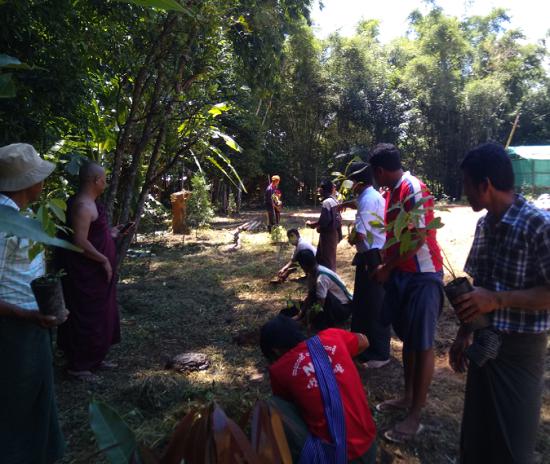Nay Zaw Hlaing
Other projects
As our project has aimed to conserve riparian buffers through community involvements, Riparian Conservation Inle (RCI-II) will move forward three developing important elements namely riparian restoration, agroforestry systems, and riparian education by assisting other different communities. Riparian restoration is to assist a continuous supply of fish and wildlife habitats, water quality, sedimentation control and sustainable development of riparian forests. Restoration sites will be the existing/threatened riparian buffer zones, and landslide area along key ‘Upper Balu’ stream. Demonstration of agroforestry system is to assist the local farming communities. This program consists of community meetings, follow-up visits, planting of agroforestry species, field inspection, and care/management at target agroforestry farms. Riparian education is to disseminate the benefits and functions of riparian buffers among different communities. This program will basically cover data collection, classes, a special lecture, field trips, training, debate, essay competition and workshop presentation.

Agroforestry tree plantings with local communitiy
According to WWF, Inle Lake has a unique composition of wildlife diversity with unusual number of species that exist nowhere else in the world. It is relatively shallow mountain lake and supports 9 endemic fish species in 3 endemic genera, and over 20 species of snails of which, one-third may be endemic. Inle Lake also hosts different number of bird species that includes native and migratory species. In general, riparian buffers protect water quality and improve habitat for aquatic wildlife while providing food, cover, water, breeding and perched areas for many other kinds of wildlife.
To date, Land reclamation, traditional agriculture and exploitation of forest resources are seriously threatening to riparian buffers and natural habitat. This is critically important to restore healthy riparian buffer for wildlife habitats and sustainable ecosystem. That is why; we have decided to undertake RCI-II project by addressing riparian conservation with community participation in Inle Lake, Myanmar. This project RCI-II will continue to perform the developing important elements identified in the project supported by first the Rufford Small Grant. In accordance with seasons and rainfall patterns, the project activities will be carried out properly and an estimate timescale of this project will be 14 months.
During wet season, the project activities will be as follows.
-Negotiation, community meetings, follow-up visits, riparian & groforestry tree planting activities, and tree care days, etc; will be carried out at target riparian zones and agroforestry farming area.
During winter and summer seasons, the following activities will be carried out.
-Data collection, classes, training for propagation techniques, a special lecture, debate and essay competition, field trips, field inspection, Supplementary tree care days, etc; will be done. Additionally, workshop presentation will introduce a new concept on payment of ecosystem services and benefit of local community. Through these programs, local communities will be initiated to conserve riparian buffers for nature/biodiversity sustainability simultaneously with environmentally friendly-agriculture.